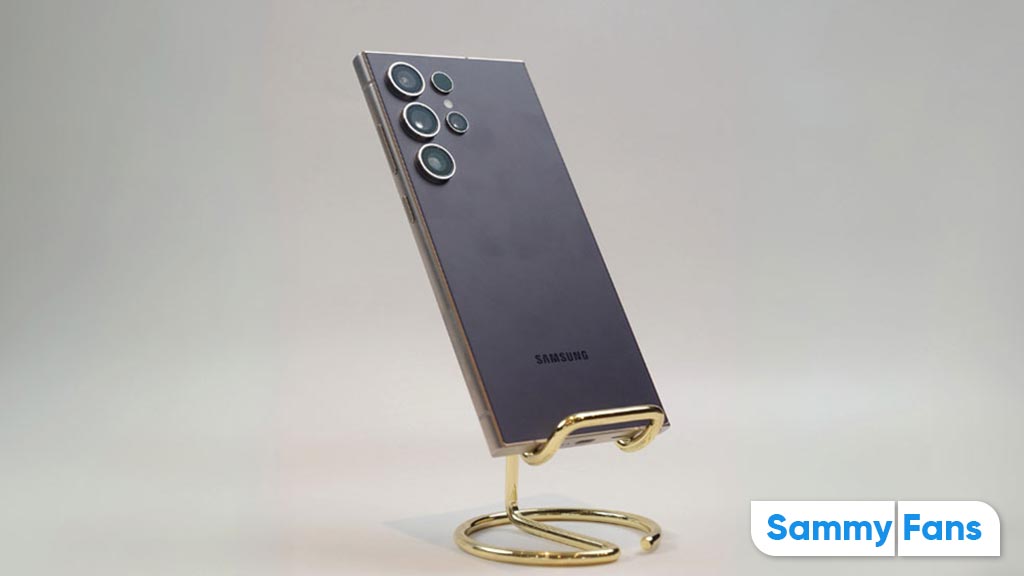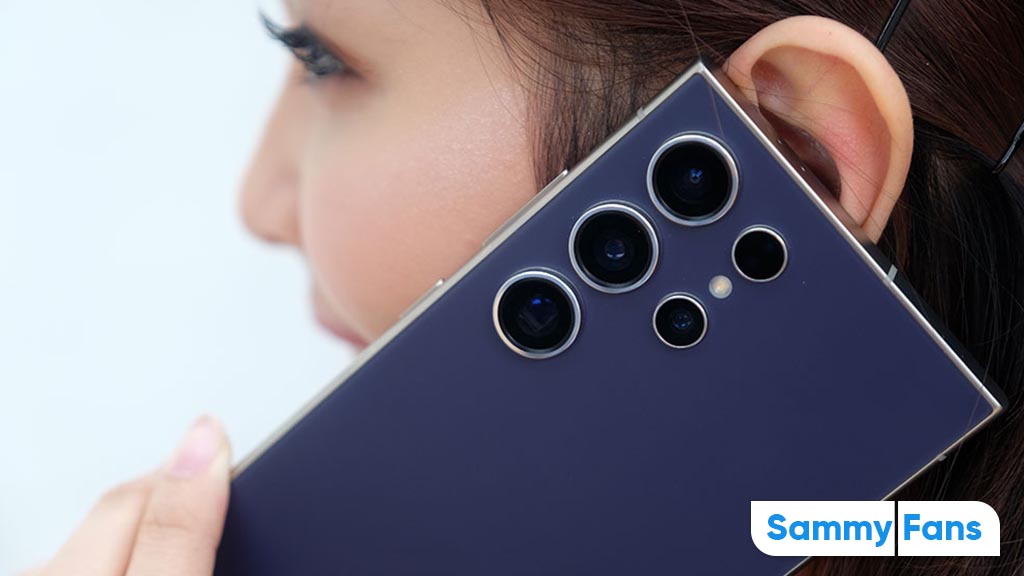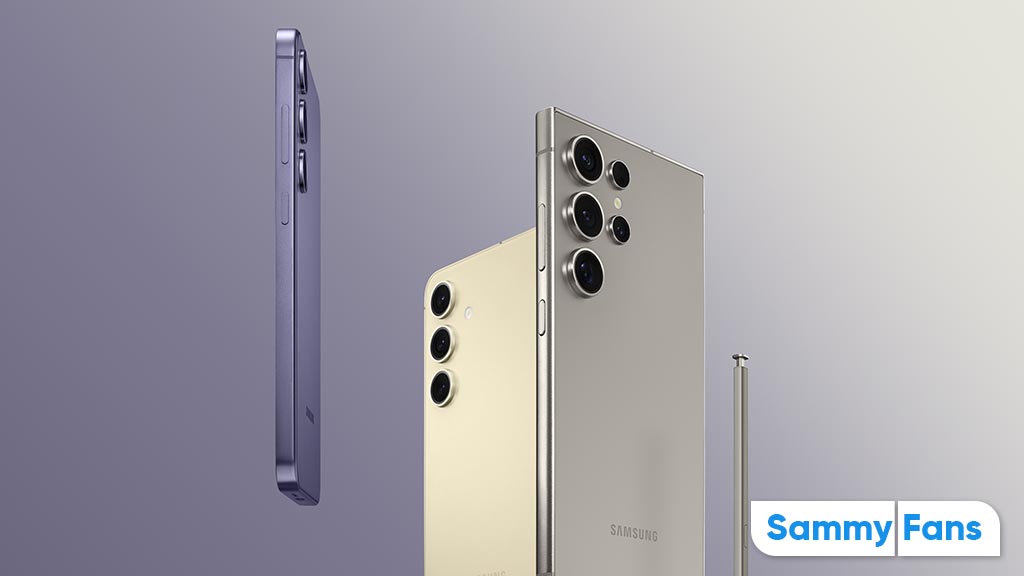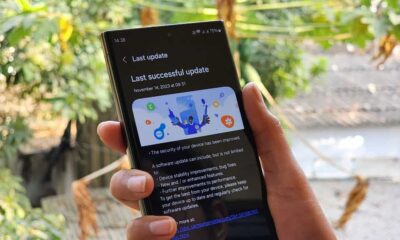Samsung
7 reasons to upgrade your Galaxy Note to Samsung’s new Galaxy S24 Ultra

Samsung has discontinued the Galaxy Note lineup but the spirit is still alive. The company turned the Galaxy S Ultra into the Galaxy Note Ultra, starting in 2022. The hybrid device now offers Note’s design + S Pen, and S Ultra’s industry grade camera capabilities.
Recently, Samsung published a post, listing many reasons that make Galaxy S24 Ultra worth upgrading. The company notes that the Galaxy Note 20 and Note 20 Ultra delivered amazing value and blur the lines between work and play in ways that continue to delight.
Follow our socials → Google News | Telegram | X/Twitter | Facebook | WhatsApp
Customers who order Galaxy S24 Ultra on Samsung.com before March 11, 2024, are eligible for up to $750 in instant trade-in credit for their existing devices. Other attractive trade-in offers are available for customers who purchase through our partners at T-Mobile, Verizon, and AT&T.

For Note users, the Galaxy S24 Ultra represents a quantum leap forward. It’s not just a smarter smartphone. It’s a device poised to become your trusted collaborator, facilitator, and creative partner in everything you do. Here are the top 7 reasons to upgrade your Note to S24 Ultra:
- Upgraded and brighter OLED screen and improved S Pen
- AI-powered Note Assist that boosts your productivity with Samsung Notes
- Intelligent camera system powered by artificial intelligence along with the most advanced hardware
- Zoom and Nightography
- Generative Edit
- Faster and power efficient Snapdragon for Galaxy processor for with more realistic graphics
- Artificial Intelligence and Generative AI capabilities for the first time in Galaxy
- Circle to Search with Google
- Live Translate
- Chat Assist
- Transcript Assist
- Seven generations of OS updates and seven years of security updates
- Durability on its peak: Titanium frame and Corning’s exclusive Gorilla Armor screen protection

Samsung
Samsung slows down Galaxy S20 FE software update frequency

After the Galaxy S20 series, Samsung has dropped monthly update support for the Galaxy S20 FE and Galaxy S20 FE 5G smartphones. This means that these devices will no longer receive monthly security updates.
Samsung just recently revealed its updated software plan for November 2024. It shows that the Samsung Galaxy S20 FE and Galaxy S20 FE 5G smartphones have been shifted from the monthly to the quarterly update plan.
Now, these Galaxy S20 FE phones will receive software updates every three months. Back in April 2024, Samsung mistakenly moved the Galaxy S20 FE phones to a quarterly update plan, along with the Galaxy Note 20 series. However, the company quickly reverted them to the monthly update plan. Now, the quarterly update plan is back in place for the Galaxy S20 FE phones.

Notably, the Samsung Galaxy S20 FE is the first smartphone in the Galaxy S Fan Edition series, offering premium features at an affordable price.
Launched in 2020, the Samsung Galaxy S20 FE and Galaxy S20 FE 5G phones initially came with Android 10. They are currently running Android 13-based One UI 5.1. These devices are not eligible for Android 14 or later OS updates. Now, they have also dropped support for monthly updates.
Even though the Galaxy S20 FE phones will no longer receive monthly updates, they are still functional and continue to work well. Users will still get support for important updates for apps, but the main drawback is that the phones won’t get the latest security patches every month, which could affect their overall security.
If you are looking to upgrade your Galaxy S20 FE smartphone, the Samsung Galaxy S23 FE could be a good choice. This smartphone comes with the latest software and features, making it a great option for those looking for an upgrade.
November 2024 Update Plan: Samsung offers security patches for over 140 Galaxy devices
Samsung
This one feature will make you love the Samsung Galaxy S25

As a long-time Samsung Galaxy user, I am familiar with many of the key innovations and developments in the smartphone industry. In the ever-evolving smartphone technology, software updates play a crucial role in enhancing device performance, security, and features.
The world’s best smartphone maker, Samsung Electronics, is rumored to be bringing a significant software update method to its upcoming flagship, the Galaxy S25 series, with the introduction of seamless software updates. This feature, if implemented, could change things up for how its phones manage software upgrades. It would bring Samsung in line with what users have come to expect from competitors like Google.
Importance of Seamless software update?
Having seamless updates makes life a lot easier for smartphone users. Normally, updating a phone’s software means being without your device for several minutes or even longer (in major software update cases) while the system prepares, installs, and reboots. This process can be a real pain, especially if you’re out or right in the middle of something important.
With Seamless updates, you don’t need to worry about the time-consuming process. It allows the phone to download an update in the background and install it to an inactive partition. When you reboot your phone, it switches to this updated partition, minimizing downtime. There’s a safety net; if something goes wrong with the new software update, the phone can revert to the previous version easily, reducing the risk of serious issues like “bricking” your device.
If the Galaxy S25 rumors turn out to be true, Samsung might finally introduce a feature that many users, particularly beta testers of One UI, have been eagerly anticipating.
From my own experience in One UI beta testing, the lack of seamless updates often meant extended times without phone functionality during updates. This could change with the S25, making beta testing more accessible and less difficult.
Samsung has provided updates effectively in the past, but they’ve never been seamless like Google‘s. By adopting the seamless updates method, Samsung could show they care about user experience just as much.
About the history, Google introduced seamless updates with Android 7.0 Nougat in 2016, setting a benchmark for Android device updates. Here’s how Google does it:
Google uses A/B system partitions where one partition (A) runs the current software, and updates are installed on the other (B) without interrupting the user. The whole process happens in the background, and once they’re ready, a reboot is all that’s required to switch to the new version.

Samsung Galaxy S25 Ultra (Source – Sammyfans)
How will it change the Galaxy S25 series experience?
The Galaxy S25 series users will have a great experience with the seamless software updates. The update would be downloaded and installed on an inactive system partition. When you decide to reboot or it happens automatically, your phone will switch to the updated system without the long wait typically associated with updates. The actual time your phone is unusable might only be the boot time, significantly less than the current update processes.
The Galaxy S25 will be breaking new ground here, bringing this crucial feature to the table before any other Samsung phone. It’ll be the only model in the Galaxy family.
Alongside this feature, there’s expected to be a larger display for all models, with the S25 Ultra possibly featuring a more rounded back for comfort. It is expected to be powered by the Snapdragon 8 Elite, promising exceptional performance. The series is rumored to launch in January 2025 with the Android 15-based One UI 7 software.
Disclaimer
Please note, as of now, there’s no official confirmation from Samsung regarding the inclusion of seamless updates or the exact specifications of the Galaxy S25 series. All the information provided is based on leaks and rumors, subject to change or clarification upon official release.
Samsung
Snapdragon 8 Elite overheating dims Galaxy S25 Ultra excitement

Snapdragon 8 Elite overheating concerns dimmed early excitement for the Galaxy S25 Ultra. The chipset promises significant performance improvements. However, the chip is suspected of excessive heating on the very first model.
Samsung will equip the Galaxy S25 Ultra with Snapdragon 8 Elite, which must avoid having any overheating concerns. The company’s mobile division is doing a great job, but any such hurdle will become a crisis for the entire business.
Snapdragon 8 Elite is being manufactured using TSMC’s 3nm process node. It’s the first Qualcomm chipset that uses cutting-edge process technology. Meanwhile, it could potentially have overheating issues on certain flagship phones.
Snapdragon 8 Elite makes flagship hot?
Realme GT7 Pro is powered by Snapdragon 8 Elite processor. Reviewers praised its solid performance and stability, but, it could have a potential issue of excessive overheating in certain circumstances.
Reviewers at AndroidAuthority and DigitalTrends observed an overheating problem on the Realme GT7 Pro running Snapdragon 8 Elite. The software issued a notification that the handset was running so warm during benchmarking.
Notably, the Realme GT7 Pro has a solid cooling mechanism, packing a huge vapor chamber. Despite this, the phone reached significant warm conditions, leading the software to pop up notice that the “phone running so warm.”
Will it shatter Galaxy S25 Ultra supremacy?
Nowadays, performance and efficiency are the scale of a chipset. Consumers won’t prefer an exceptionally powerful processor without solid power efficiency. Power efficiency alone is not acceptable unless it features decent performance.
Samsung is all set to make the Galaxy S25 Ultra stand out from rivals such as iPhone 15 Pro Max. Apple is using 2nd-gen 3nm chipset in the latest iPhone Pro models. Hence, any overheating concern would put Samsung in massive trouble.
The Korean tech giant is said to pack the next flagship with an improved cooling tech. Oryon CPU brings exceptional performance, but efficiency can be achieved with an equivalent approach from the software and cooling mechanism end.












